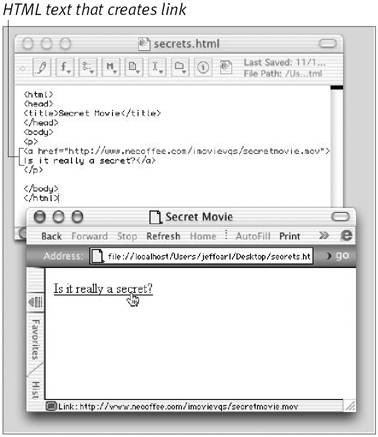Writing HTML
| This, of course, isn't a book about HTML, so I'm going to assume that you know the basics about coding Web pages, and that you have an application (such as Bare Bones Software's BBEdit, or even TextEdit) that you use to build pages. If that's not the case, check out Elizabeth Castro's book HTML for the World Wide Web: Visual QuickStart Guide, which remains the best HTML guide I've read (I said so even before I got involved with Peachpit Press). That said, there are still some important things to know about adding a movie to a Web page using HTML. There are two ways of going about it: you can copy the file to your Web directory (provided by your Internet service provider) then link directly to it; or you can embed the movie on a Web page so that it's part of the page's layout. To link to a QuickTime movie file:
To embed the movie on a page:
|
EAN: 2147483647
Pages: 125
